8 Chinese Foods You Must Try While Studying Abroad
Here are some of the dishes you should be sure to try while studying in China, and also how you can pronounce them like a local!

Many foreigners have the impression that Chinese food consists of just noodles, fried rice, and maybe Kungpao chicken. Before living in China, I thought it would be pretty much just rice and noodles every meal.
You’ll be pleasantly surprised at the variety of Chinese food available when you're studying abroad in China. For example, there’s an entire cuisine for Shanghai alone -- the Shanghainese cuisine. So can you imagine how many different kinds of foods there are for 23 provinces?
I studied and then worked in Shanghai for nine years, and while we city dwellers can get away without eating Chinese food at all given the abundance of international foods available, I enjoyed exploring the different Chinese cuisines available within Shanghai, and was more adventurous in food choices while travelling around China.
Chinese Food by Region
China is a huge country -- one that you likely won’t be able to fully explore during your time studying abroad.
Instead, consider sampling dishes from the different regions of China. Each of the four main regions -- North, East, Southwest, and West -- have distinct flavors and ingredients that will show you how varied life can be in China.
Here’s a quick breakdown of each region and the types of food you might find there:
Food in North China
North China is known for having their foods heavy in carbs, as winters get very cold and bitter. These are your noodles, rice, dumplings, (Chinese) pancakes, and steamed buns. Northern cuisine tends to have garlic, scallions, leeks, and chilies as key ingredients.
Food in East China
East China cuisine is largely influenced by Shanghai and Hangzhou cuisines, which tend to be sweet. This cuisine uses sugar, wines, and vinegar to add sweetness to their dishes. Seafood is also more abundant in this region.
Food in Southwest China
Probably the most popular cuisine in the Southwest of China is Sichuan cuisine -- it’s also a common type of Chinese food you can find abroad. Common spices include peppercorns, star anise, and cumin.
The unique “numbing” flavor in many Sichuan dishes comes from the Sichuan peppercorn. When you eat dishes flavored with this peppercorn, you will feel your tongue and lips go somewhat numb and tingly, like nothing you’ve experienced before. The Chinese believe that these dishes are good for health in cold, wet weather, which is prevalent in this region.
Food in West China
West China covers mainly Xinjiang and Tibet, where food tends to be heavy on meats and cumin, especially mutton and beef. This area also features bread dishes that are quite filling. Food in Tibet include momos, which are dumplings filled with yak meat or mutton, and Tibetan butter tea.
Food here is quite different from your usual Chinese stir-fried dishes, and with vast lands of beautiful landscape and ethnic minorities, you may feel like you’re not in China at all.
Without further ado, here are some of the dishes you should be sure to try while studying in China. I also included tips on how to pronounce each dish in Chinese, plus the region each dish is from.
Dumplings
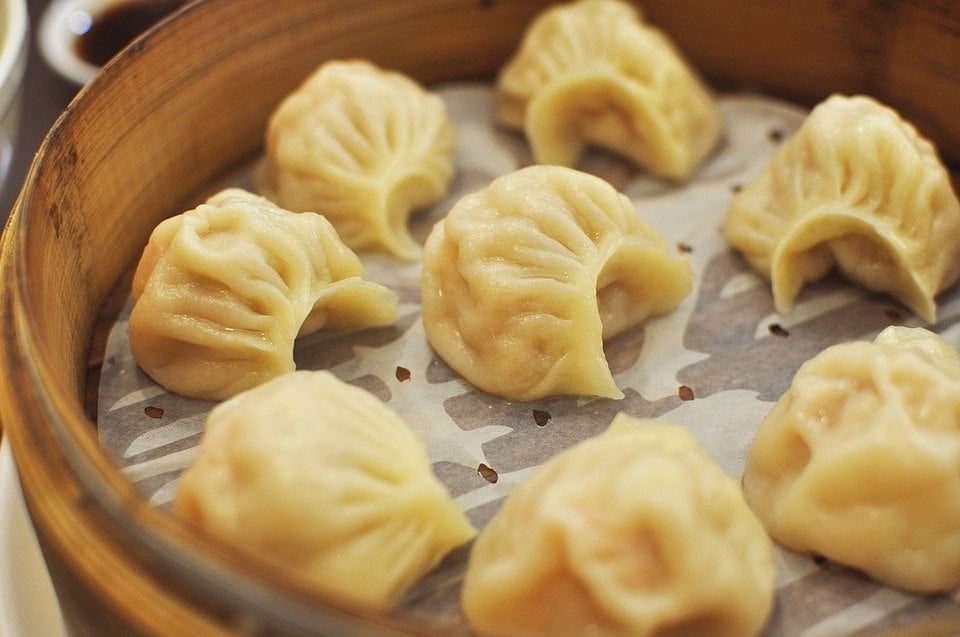
Dumplings are a very common staple for North China cuisine and is a popular dish all around China.
Dumplings are also my favorite meal during lunch at school since it can be a cheap, quick, and yet such a sumptuous meal while chatting with my classmates. We usually order several different flavors for sharing.
A dumpling typically consists of minced meat (usually pork) and finely diced vegetables wrapped into thin dough skin. Other fillings may include diced shrimp, ground chicken, or beef. Dumplings can be cooked by boiling, steaming, or pan-frying. They are usually served with a black vinegar dipping sauce. You can always eat them without the vinegar, but I find that the vinegar enhances the taste of the dumplings, especially since the dumpling skin can be slightly thick and plain-tasting on its own.
- Also called: 饺子, jiaozi
- Region: North China
Peking Duck
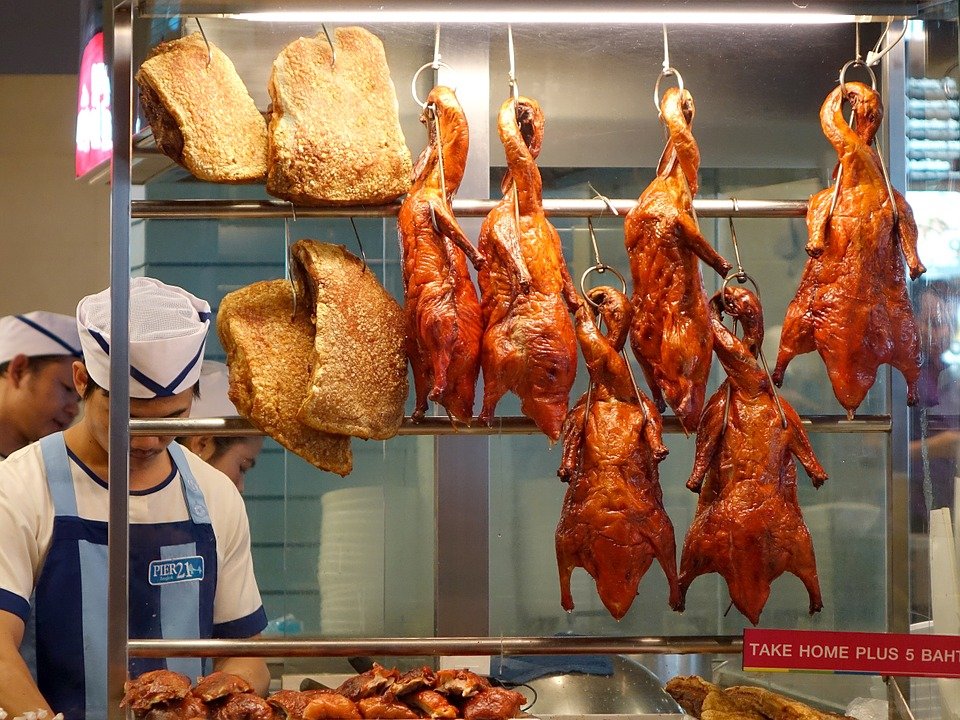
Peking duck originates from Beijing (hence the name), and has become an extremely popular restaurant dish both in China and abroad. The dish is roast duck with crispy skin, served with thin sheets of flour skins and condiments. Eating this is almost an art, as this dish has three courses.
First, you will be served thinly sliced crispy duck skin, with some sliced duck meat, to be wrapped in thin sheets of flour skins with scallions, garlic, cucumber, and dipped in a black bean sauce.
Next, the duck meat is stir-fried, and you can choose to have it with porridge or noodles.
Lastly, the duck bones are used to make soup for you to savor.
You may also choose to just have the first course and take home the rest of the Peking Duck.
This dish can get a bit pricey (but not as much as having it overseas), so I usually saved it for special occasions like when relatives from abroad visited or when I went out with my friends for a birthday celebration.
- Also called: 北京鸭, beijing ya
- Region: North China
Soup Dumplings
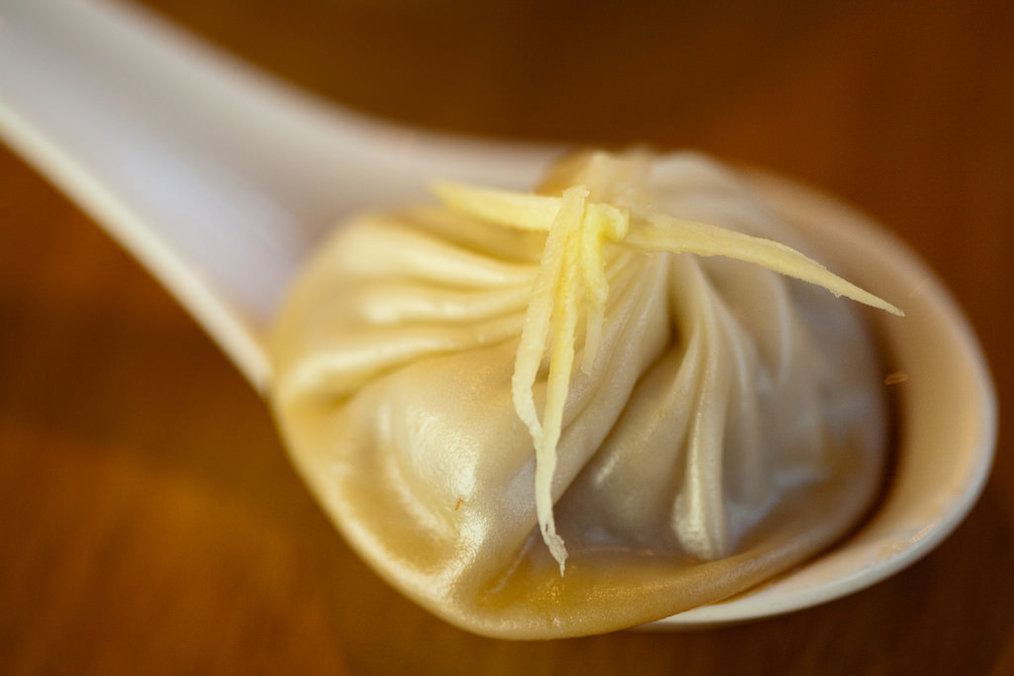
Not to be confused with the dumplings from the North, these Shanghainese soup dumplings are wrapped with delicately thin dumpling wrappers encasing a small spoonful of soup and pork. They are served in bamboo steamers baskets, with a dipping sauce consisting of ginger slices and vinegar.
This is also a favorite dish to share with my classmates during lunch, along with regular dumplings. Although there were times in winter when I would crave these piping hot soup dumplings so much that I had them all by myself with a bowl of noodles. This never fails to warm my belly and my heart.
To prevent embarrassment or burning your tongue, here’s a tip on how to eat these delicious soup dumplings: A bamboo steamer basket will arrive at your table steaming hot, so popping the entire dumpling in your mouth is just asking for your tongue and lips to be burned. Bring both your chopsticks and spoon to the basket, each hand holding one utensil. Use your chopsticks to hold the soup dumpling by the top, and rest its base on your spoon. Bring it to your mouth, and nibble a small hole at the top to release some of the heat first. You may then start to blow gently and slurp a little soup before savoring the entire soup dumpling into your mouth once it’s not too hot to do so.
- Also called: 小笼包, xiaolongbao
- Region of Origin: East China
Hairy Crab
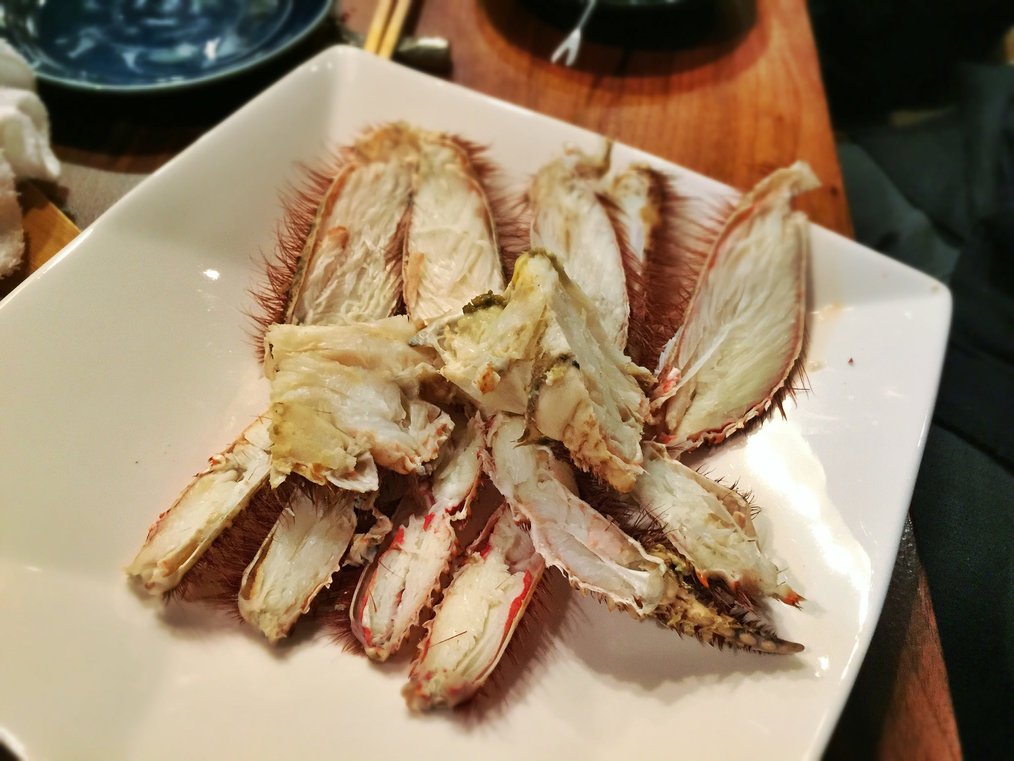
Hairy crab is seasonal and available in autumn. The best ones, according to locals, are from Yangcheng Lake, northwest of Shanghai. If you’re in Shanghai or around the area during that time, you won’t miss it, as the crabs will be selling like hot cakes in restaurants and supermarkets. Hairy crabs are small but contain a substantial amount of crab roe, which you can enjoy with a dipping sauce of rice vinegar, sugar, and ginger.
This is a perfect treat to try with local friends on weekends, as my foreigner friends didn’t enjoy it much. (Pro-tip: study abroad is a perfect time to take chances -- go for it!)
- Also called: 大闸蟹, dazhaxie
- Region: East China
Sichuan Spicy Chicken
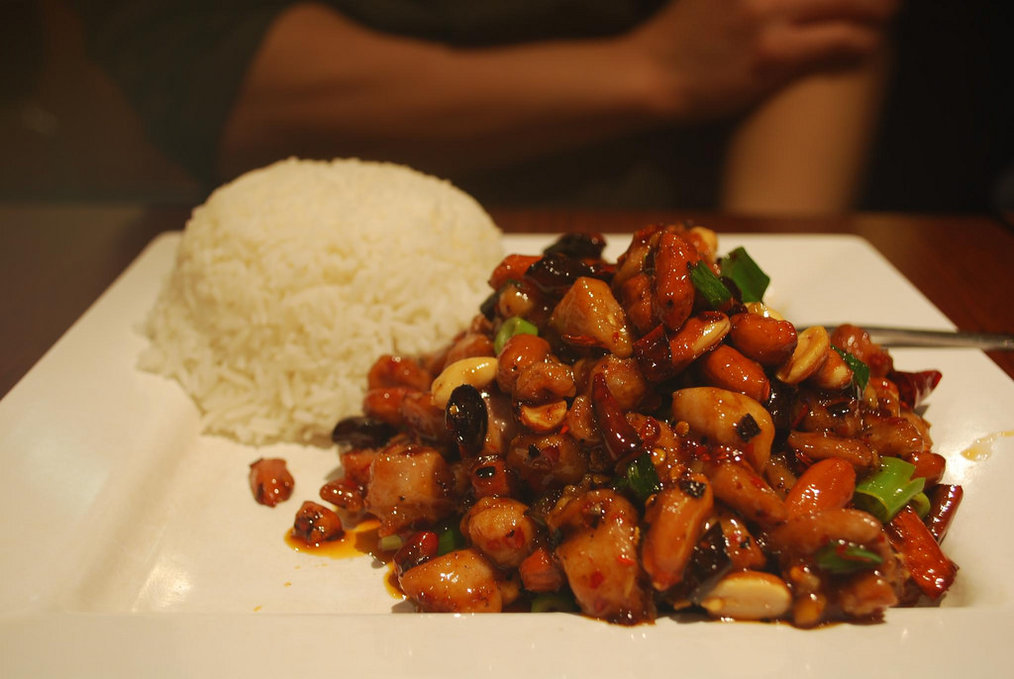
This dish consists of small marinated deep-fried pieces of chicken, stir-fried with dried Sichuan chili peppers, spicy bean paste, Sichuan peppers, garlic, and ginger. When you eat it, have it with some rice to neutralize the spiciness, and only pick the pieces of chicken while leaving the chilies in the bowl.
- Also called: 辣子鸡, laziji
- Region: Southwest China
Sichuan Hot & Sour Soup
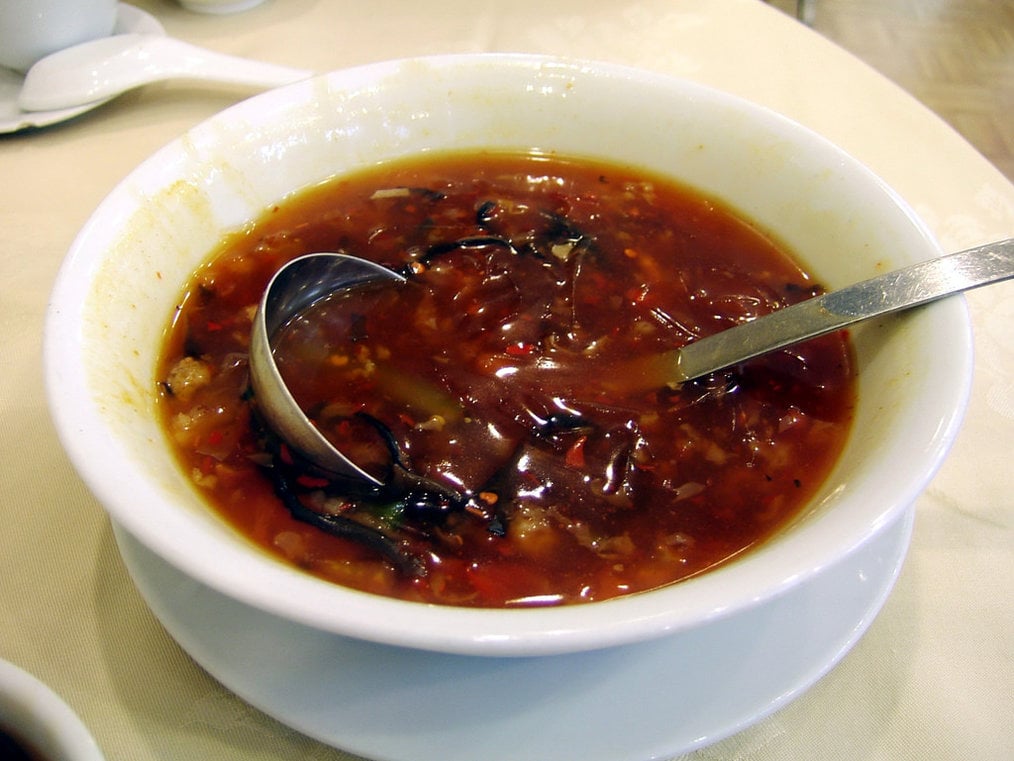
Another good dish to counteract the cold, wet weather in this region is Hot and Sour Soup. It is made hot (spicy) by red or white pepper, and sour by vinegar. The broth usually also contains ingredients such as lily buds, wood ear fungus, bamboo shoots, and tofu. Somehow these opposing flavors work great together in this comforting soup.
My friends and I would usually have both the Sichuan Spicy Chicken and the Sichuan Hot and Sour Soup at a Sichuan restaurant. As the food is quite spicy, some people may experience a bit of digestive distress. Instead of eating this right before you rush into a day of exams, consider saving it for the weekend when you have time to recover.
Despite that, don’t be surprised if you keep going back for more. Sichuan peppercorn does that to you, but it’s delicious enough to make up for it.
- Also called: 酸辣汤, suanla tang
- Region: Southwest China
Lanzhou Hand-Pulled Beef Noodles
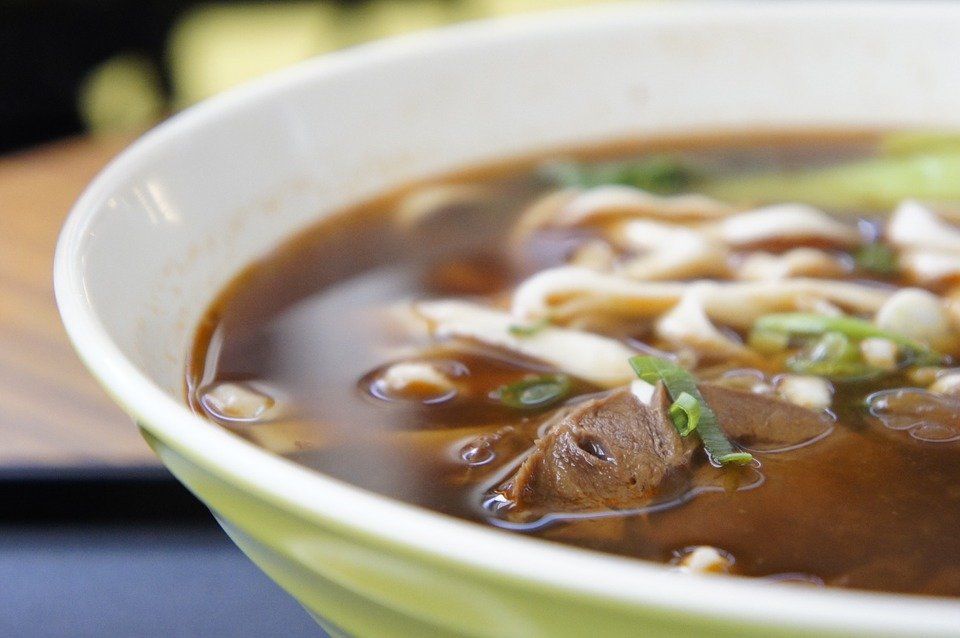
Although this is a dish from Lanzhou in West China, there is a chain of Lanzhou Lamian eateries around major cities in China. When you step in, you will usually be able to watch a young noodle master hand-pull noodles. He will pull, twist, and roll the dough until it’s ready. And then in just a few seconds, he will be looping and pulling the dough through his fingers, creating noodles, before he quickly drops them into a well of boiling water. You will then be served a piping hot bowl of beef and cilantro-infused soup broths with the noodles that he just made. These stores are halal-certified as they are Muslims, so don’t expect any pork dishes.
This is a great meal between classes, especially in winter. The staff remembers everyone’s orders and serve pretty fast. The soup is always hot and you can usually see the entire family running a Lanzhou Lamian eatery, so it’s a cozy place to have your noodles.
- Also called: 兰州拉面, lanzhou lamian
- Region: West China
Xinjiang Lamb Skewers
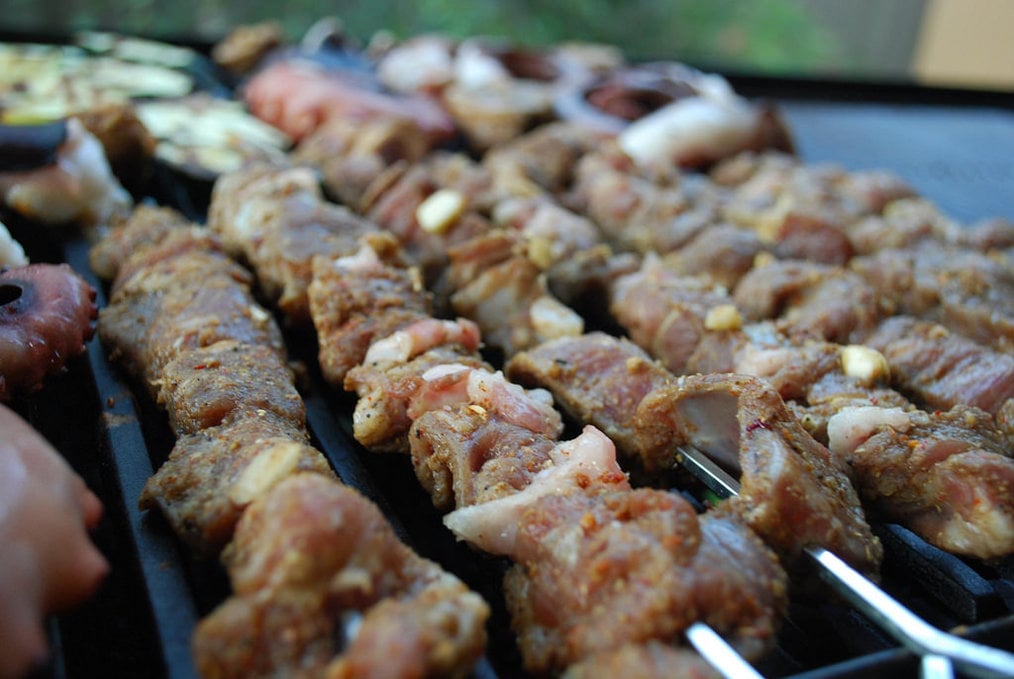
Commonly found on food streets at night, you can smell these cumin-infused lamb skewers from a couple of blocks away. These skewers are filled with alternating pieces of lamb meat and (very tasty) fat seasoned with a multitude of spices, barbecued over a unique grill using coal. Best accompanied by ice-cold Tsingtao beer with friends at the end of a long week at school.
- Also called: 羊肉串, yangrou chuan
- Region: West China
These foods are really only the tip of the iceberg! There is almost an inexhaustible list of foods you can enjoy in China as part of your culinary adventure. Even after leaving China, whenever I get a whiff of Sichuan peppercorn or cumin in Chinatown, it takes me right back to a hole in the wall or a street food cart in China during my university days, having a moment of delicious joy.
Ready to study abroad in China? Be open-minded when it comes to food (and everything else), and if you’re not sure how to eat the dish, feel free to ask a local! The Chinese are most happy to share which dipping sauce you should use, or how to open a hairy crab. Don’t be afraid to ask or watch how the locals do it.
One last thing: you might notice that most foods in China are meant to be shared. Bring some classmates along to be able to try a wider variety of dishes.
